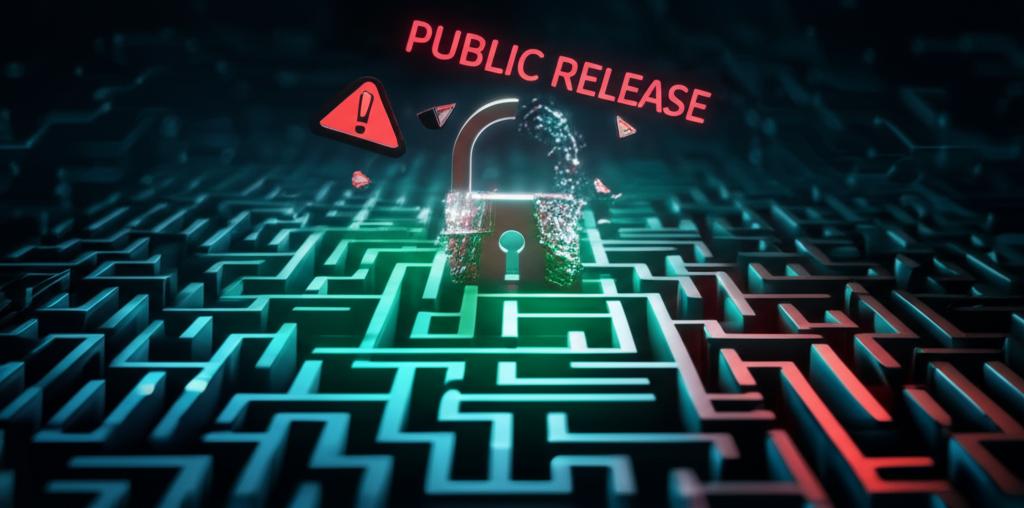Decoding the Devastating Maze Ransomware: A Double Extortion Onslaught
The digital landscape is constantly evolving, bringing with it sophisticated threats that challenge the very foundations of cybersecurity. Among these, Maze Ransomware emerged as a particularly menacing pioneer, fundamentally altering the ransomware playbook. Moving beyond simple data encryption, Maze introduced the terrifying concept of “double extortion,” transforming an already disruptive attack into a multifaceted crisis that threatened both an organization’ operational continuity and its public reputation.
What is Maze Ransomware?
Maze Ransomware, first identified around May 2019, quickly gained notoriety for its aggressive and innovative tactics. Unlike traditional ransomware strains that primarily focused on encrypting an organization’ files and demanding a ransom for the decryption key, Maze added a critical new layer of threat. It was designed to breach corporate networks, move laterally to identify valuable data, and then execute its dual-pronged attack.
Understanding the Double Extortion Attack
The true innovation of Maze Ransomware lay in its double extortion model. Here’s how it worked:
- Data Exfiltration: Before encrypting any files, the Maze operators would meticulously identify and exfiltrate sensitive data from the victim’s network. This could include intellectual property, customer records, financial documents, and personal employee information.
- Data Encryption: Only after exfiltrating the data would the ransomware proceed to encrypt the victim’s systems and files, rendering them inaccessible.
- Dual Ransom Demand: The attackers would then present two demands:
- A ransom for the decryption key, allowing the organization to regain access to its encrypted data.
- A second, often higher, ransom to prevent the public release or sale of the stolen, sensitive data on leak sites or dark web forums.
This strategy placed immense pressure on victims. Paying the encryption ransom didn’t guarantee the safety of exfiltrated data, forcing organizations into a difficult dilemma, weighing the costs of data recovery against potential massive reputational damage, regulatory fines, and loss of customer trust. Maze even established dedicated “leak sites” to publish stolen data if victims refused to pay, making good on their threats and encouraging compliance from future targets.
The Devastating Impact and Consequences
The impact of Maze’ double extortion attacks was profound:
- Operational Disruption: Encrypted systems brought businesses to a standstill, leading to significant downtime and financial losses.
- Reputational Damage: The public exposure of sensitive data eroded customer trust, damaged brand image, and could lead to long-term reputational harm.
- Financial Losses: Ransoms, recovery costs, legal fees, regulatory fines (e.g., GDPR, CCPA), and lost revenue mounted quickly.
- Legal and Regulatory Fallout: Data breaches often triggered mandatory reporting requirements and could result in severe penalties from regulatory bodies.
- Competitive Disadvantage: The exposure of proprietary information or intellectual property could give competitors an unfair advantage.
Pioneering a New Era of Ransomware
While Maze Ransomware operators announced their retirement in late 2020, their innovative double extortion tactic did not disappear. Instead, it was widely adopted by successor groups like Egregor, Conti, REvil, and others, becoming a standard feature in modern ransomware attacks. Maze effectively pioneered a new, more aggressive, and financially damaging era of cyber extortion.
Robust Strategies for Defense and Mitigation
Defending against sophisticated threats like Maze and its successors requires a multi-layered and proactive cybersecurity posture:
- Regular Data Backups: Implement a robust backup strategy following the 3-2-1 rule (three copies of data, on two different media, with one copy offsite and offline).
- Strong Network Segmentation: Isolate critical systems and sensitive data to limit lateral movement of attackers.
- Endpoint Detection and Response (EDR): Deploy advanced EDR solutions to detect and respond to suspicious activity on endpoints.
- Multi-Factor Authentication (MFA): Enforce MFA for all remote access and critical systems to prevent unauthorized access.
- Patch Management: Keep all operating systems, applications, and network devices updated with the latest security patches.
- Employee Cybersecurity Training: Educate employees about phishing, social engineering, and safe browsing practices.
- Incident Response Plan: Develop and regularly test a comprehensive incident response plan to minimize the impact of an attack.
- Threat Intelligence: Stay informed about emerging threats and attacker tactics to adapt defenses accordingly.
Conclusion
Maze Ransomware may be history, but its legacy of double extortion continues to plague organizations worldwide. By fundamentally changing the ransomware game, Maze underscored the critical importance of a holistic and vigilant approach to cybersecurity. Protecting against these advanced threats demands not just technological solutions but also robust processes, well-trained personnel, and a proactive mindset to safeguard data, maintain operations, and preserve reputation in an increasingly hostile digital environment.







